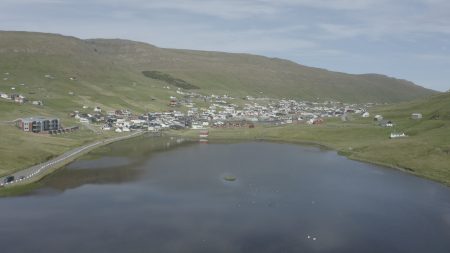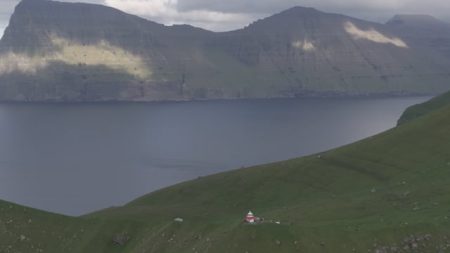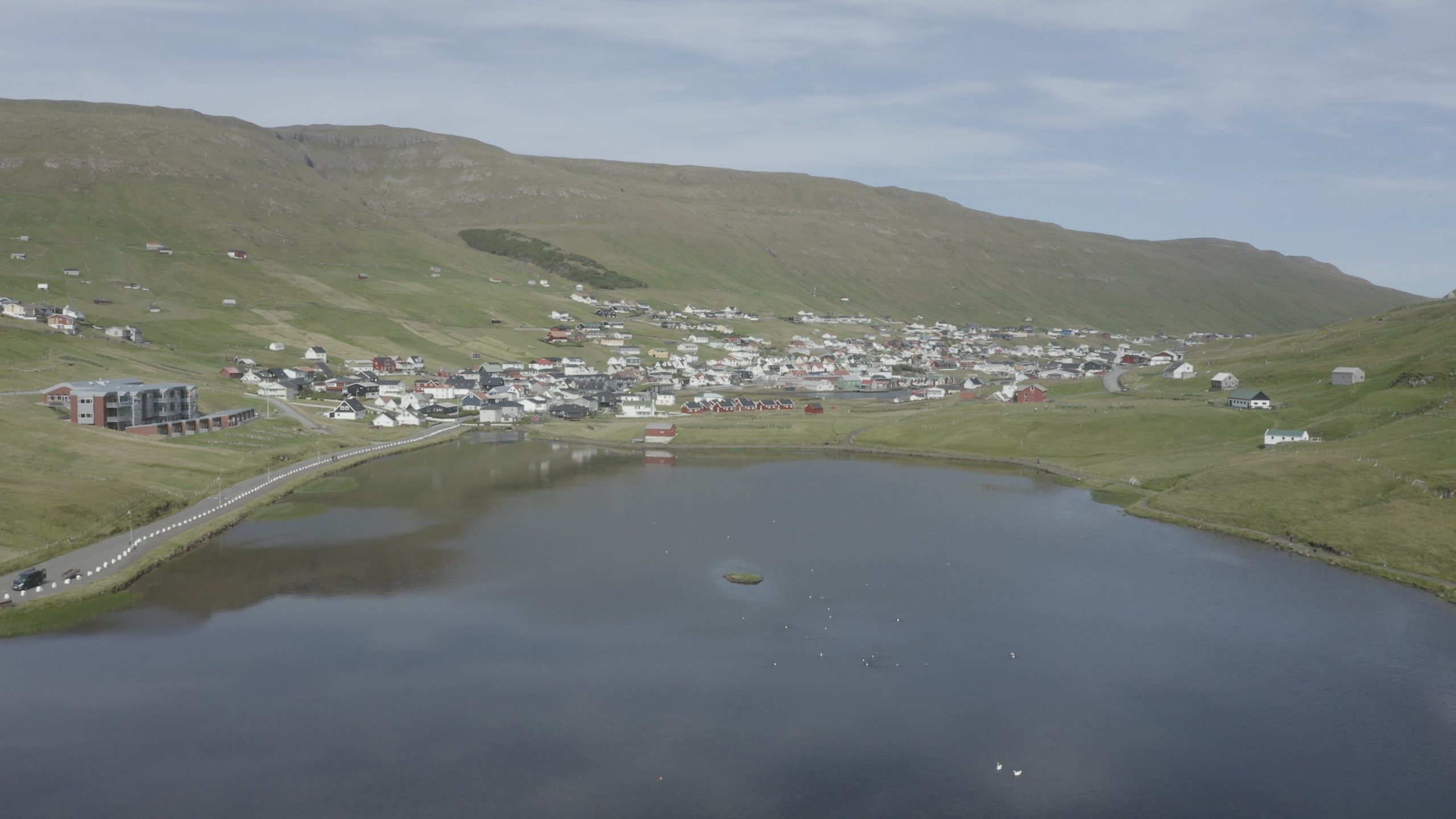The municipality of Vágur comprises the town of Vágur and the village of Nes. Around Vágur fjord (Vágsfjørður) lies beautiful Vágur, with its rich history, characteristic culture, and striking nature. Nes lies at the inlet of Vágur fjord.
Vágur was for centuries known for the cliff fish industry. Today, tourism plays a important role. Vágur offers a wealth of possibilities to enjoy recreational activities, landmarks, and tourist attractions, e.g. Eggjarnar, Vágseiði, Páls Høll, and Marghøllin. Vágur is known for its hospitality, and perhaps most notably the New Year’s Eve celebration, where culture and community become one.
Suðuroy (Danish: Suderø) is the southernmost of the Faroe Islands. The island covers 163.7 square kilometres (63.2 sq mi). In 2018 the population was 4,601. Suðuroy region (sýsla) comprises this island and Lítla Dímun, the next isle northward in the Faroes, which is uninhabited.
Geography
The highest point of Suðuroy is the mountain Gluggarnir (610 metres or 2,001 feet), but the most famous peak is definitely the mountain of Beinisvørð northwest of the village of Sumba. The Beinisvørð and its scenery have been praised by the local poet Poul F. Joensen (1898–1970), as well as other Faroese poets. Suðuroy is the island which has the most islets and skerries. Suðuroy and the islets and skerries near the island number 263, including the island itself.
The inhabited settlements on Suðuroy include, from north to south: Sandvík, Hvalba, Froðba, Tvøroyri, Trongisvágur, Øravík, Fámjin, Hov, Porkeri, Nes, Vágur, Fámara, Akrar, Lopra and Sumba.
Suðuroy is also the only island of the Faroes which has coalmines, one of which is still active. It is located in Hvalba, near the tunnel. Other coalmines were in Rangabotnur in Trongisvágur (on the south side of Trongisvágsfjørður), and in Fámjin. The bays of Øravík, Trongisvágur, Fámjin, Vágur and Hvalba are designated grind bays.[6]
In contrast to the name Suðuroy (South Island, singular), the name Suðuroyggjar (Southern Islands, plural) refers to the Outer Hebrides in Scotland. To refer to the islands south of Skopunarfjørður one can colloquially say (going) “sunnanfjørðs” or formally Suðurøkið.
Important Bird Area
The western side of the island has been identified as an Important Bird Area by BirdLife International because of its significance as a breeding site for seabirds, especially northern fulmars (100,000 pairs), European storm petrels (2500 pairs), European shags (200 pairs), black-legged kittiwakes (39,000 pairs), Atlantic puffins (20,000 pairs), common guillemots (31,900 individuals) and black guillemots (400 pairs).







Reviews
There are no reviews yet.